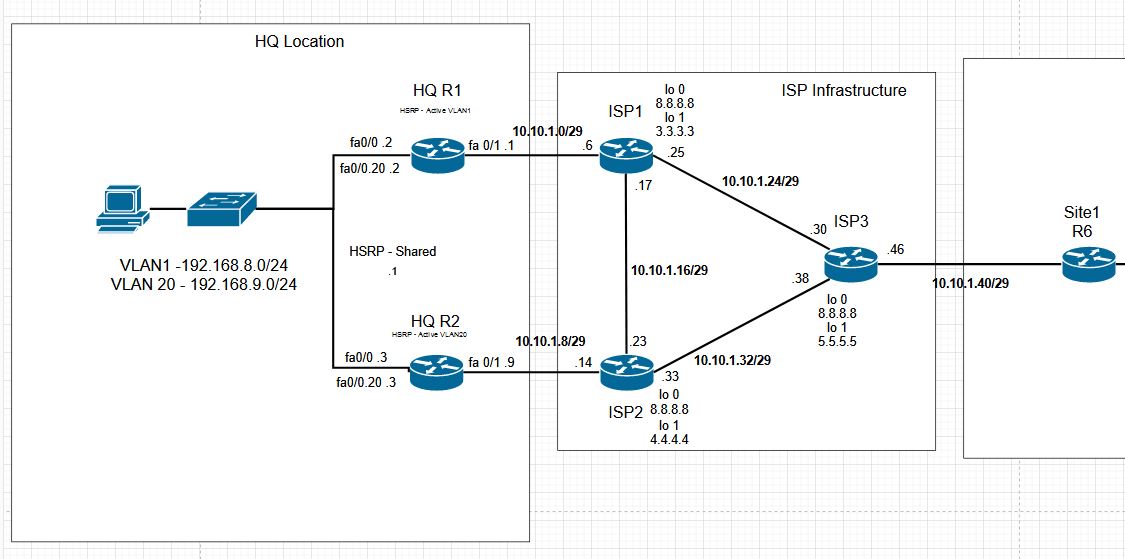CCNP Topology OSPF
The initial OSPF configuration for the topology will provide connectivity between the ISP routers 1 – 3. We will set up 4 total areas with area 0 connecting the routers, and a new area for each customer hand off. As a note, on the Core exam we only deal with normal areas, so all the areas on this topology will be normal.
Our Updated Topology Diagram
From the updated diagram we can see that we have added new loopback interfaces to each router, and configured /29 networks to connect the routers together.

Our Basic OSPF Topology
For the OSPF topology we created a new diagram to show the area layouts. Although we can put a lot of information in a single diagram, sometimes it can be better to have specific diagrams for specific purposes.

Our OSPF Example Configuration
The set up of each router is very similar. We will show the ISP1 router configuration, but the other devices will have the same general set up.
Router OSPF 100
For ISP1 we set the router under the OSPF Process. The authentication is also set up under the process (Although it can be done on each interface). Next, we will do the customer facing subnet as a network statement for area 1. And last we will make sure the interface pointing to the customer is passive.

Next we will do the interfaces connecting to the other ISP routers, and our own loopback interface. To show the difference, we did the configuration for the OSPF area on the interface. The authentication key is always configured on the interface. The configuration is repeated in the same manner for the other routers.



OSPF Verification
When everything is completed, we can check our neighbor status. We can see that we have two neighbors, and that each neighbor is a BDR. Since the links are Ethernet, it is a broadcast segment and will have a designated router and back up.

Checking OSPF routes also shows that we are receiving two IA routes, indicating we can access the remote areas 2 and 3.

Although we are not going in depth here with LSAs, we will also show the LSA database to show the different LSAs we are receiving.

Now that OSPF is up and working, we can get our basic BGP set up in a new post.
